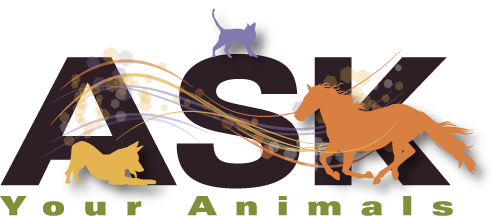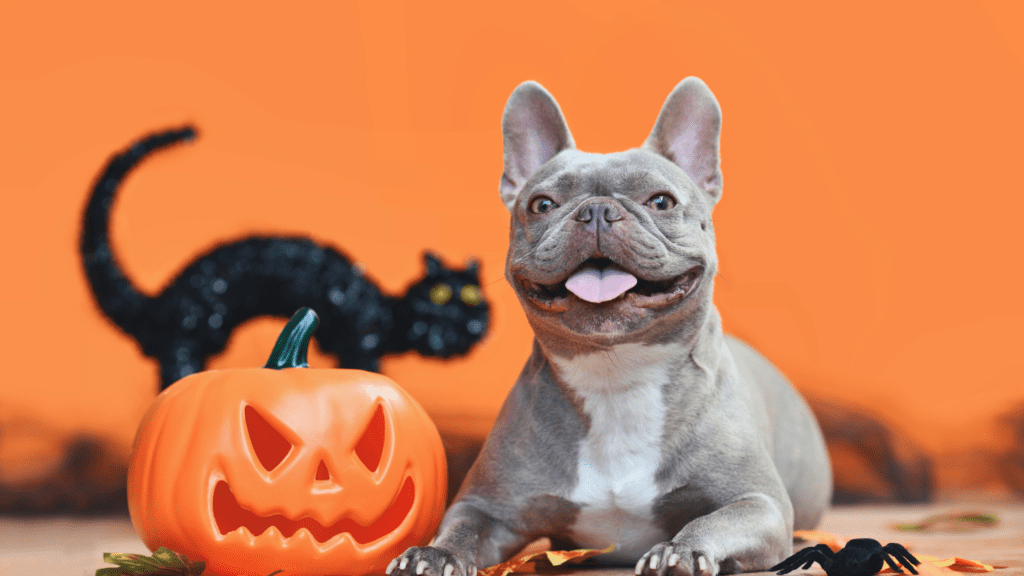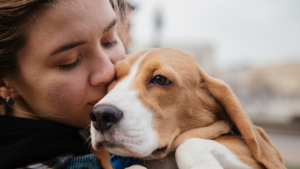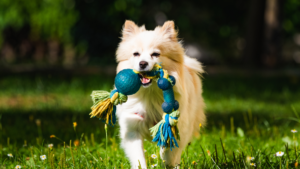Now that it’s officially fall, many of you have already decorated your homes or are about to start, bringing the beautiful colors and textures of the season into your space. However, as an Animal Communicator and medical intuitive, I often see how certain fall decorations, while festive and fun for us, can cause distress to both our pets and local wildlife.
Animals are highly sensitive to changes in their environment, and some common fall décor items can lead to confusion, anxiety, and even physical harm. Let’s take a look at how we can still enjoy the season while being mindful of our pets and the creatures around us. Understanding how these decorations may affect them is the first step in ensuring their safety and well-being.
Specific Fall Décor to Avoid
Fake Cobwebs
Fake cobwebs are a popular fall decoration, often draped over bushes or trees to create that spooky seasonal look. However, these synthetic webs can be dangerous, especially for wildlife like birds and butterflies. Hummingbirds and butterflies are in their peak migration season during the fall, and these delicate creatures can easily become entangled in fake cobwebs, leading to injury or worse.
Similarly, pets like cats or dogs may be intrigued by these unfamiliar objects and try to play with or chew on them, which can also lead to dangerous situations.
Tip: Opt for safer alternatives. Instead of using fake cobwebs outside, try using natural decorations like pumpkins, cornstalks, or hay bales. These are not only safer but also more in tune with the autumn season. If you do want to use fake cobwebs, keep them indoors and out of reach of pets.
Fake Berries and Artificial Fruits
Another common fall decoration is the use of artificial berries, fruits, and acorns. While these items look festive, they can be mistaken for real food by wildlife like squirrels, birds, or even your own pets. Consuming these artificial items can lead to choking or cause serious health issues if they are made from toxic materials.
As an Animal Communicator, I often help pet owners understand the source of sudden illness or distress in their animals, which sometimes turns out to be related to them ingesting something they shouldn’t have—like these types of decorations. In the past, I’ve even helped owners curate questions and requests for their vet when these instances arise.
Tip: Choose real, edible items. Consider decorating with real fruits and vegetables, such as pumpkins, apples, and gourds. Not only do they create a more authentic fall aesthetic, but they also pose less risk to wildlife and pets. If your pet or local wildlife nibbles on them, they’ll be safe and might even enjoy the snack!
Candles and String Lights
Candles and string lights are often used to create a cozy, autumnal atmosphere, but they can pose serious risks to pets. Open flames from candles can be knocked over by a curious pet, leading to burns or even fires. Similarly, string lights can be tempting for pets to chew on, which can result in electrical shocks or choking.
Through my work, I’ve often helped pet owners understand why their pets may seem anxious or agitated around certain decorations. In many cases, the lights or candles were the culprits, either because they were too stimulating, their fragrance too strong, or because the pet had a close call with a dangerous situation.
Tip: Choose safer alternatives. Use flameless, battery-operated candles to create the same warm glow without the risk. Ensure string lights are placed out of reach of pets and always unplug them when not in use to avoid any accidents.
Being Mindful of Outdoor Fall Décor, in General, is Important
During the fall, many animals, like hummingbirds and butterflies, are migrating or preparing for the colder months. Unfortunately, outdoor fall décor can sometimes disrupt their natural paths, especially if it obstructs their usual resting or feeding spots.
Decorating your yard with too many obstructions can prevent these creatures from finding safe places to land or forage for food. I often encourage clients to take a moment to observe where animals naturally gather food or rest, allowing this awareness to guide where and how they place their outdoor décor, ensuring it doesn’t disrupt the wildlife around them.
Tip: Leave space for wildlife. Instead of cluttering your yard with too many decorations, consider leaving some open areas where migrating animals can safely rest. Adding wildlife-friendly items like birdbaths or nectar feeders can also help support these animals during their journey.
Seasonal Changes and Pet Anxiety
Pets are sensitive to environmental changes, and introducing new décor into their familiar space can sometimes cause anxiety. Through my work as an Animal Communicator, I’ve encountered many pets that show signs of distress when their environment changes abruptly, such as new decorations with unfamiliar smells, textures, or even lights.
Some pets might start acting out—chewing, hiding, or showing other signs of discomfort—because they are unsure how to respond to these changes. As an Animal Communicator, I often help pet owners identify the root cause of their pet’s behavior, which can often be linked to these kinds of sudden changes in the home.
Tip: Introduce changes gradually. If you notice that your pet is acting differently after you’ve decorated, consider gradually introducing the changes rather than decorating all at once. Give them time to adjust to the new look and feel of their environment. You can also observe how they react to certain objects and remove anything that seems to be causing them anxiety.
Create a Safe and Cozy Fall for All
Fall is a time of warmth, beauty, and transformation, and it’s only natural to want to celebrate the season with festive décor. By being mindful of the materials we use and how our décor impacts the environment, we can still enjoy a beautifully decorated home while keeping our animals safe. If you’ve noticed changes in your pet’s behavior or health after decorating, working with an Animal Communicator can help you better understand what’s causing their discomfort and how to ease their stress. This fall, let’s celebrate responsibly by creating spaces that are safe and welcoming for both our pets and the wildlife that share our surroundings.



